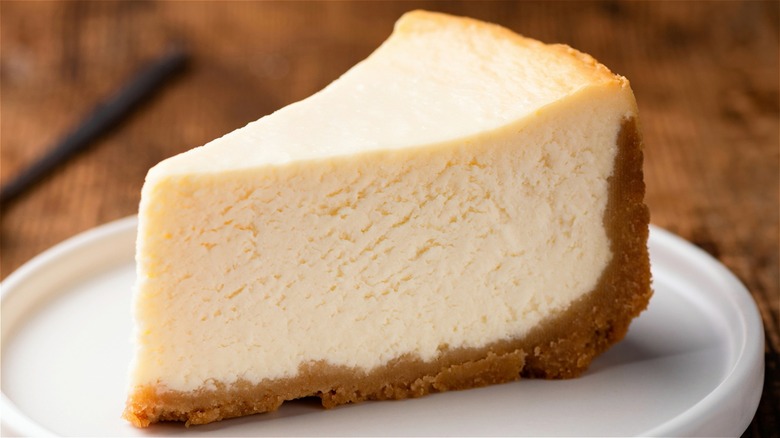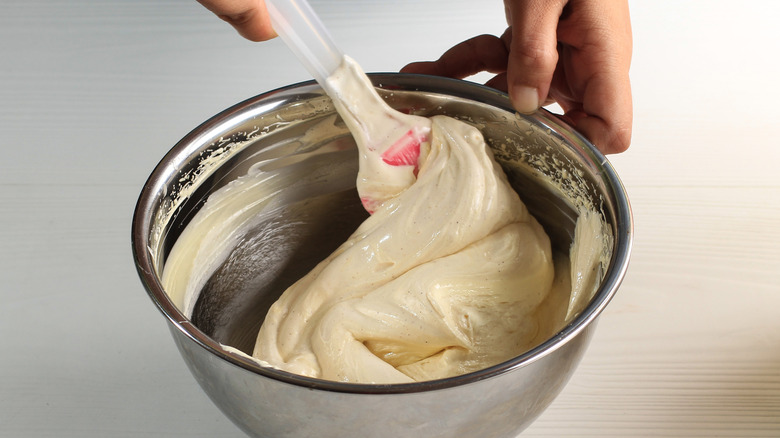One Of The Biggest Cheesecake Mistakes Is Rushing The Process
A cheesecake, made out of eggs, sugar, and some kind of cheese, is known to be a very smooth and creamy cake (though people are still fighting over if a cheesecake is actually a cake at all). However, the wonderful cheesecake is also known for its difficult baking process and unpredictable outcomes (via Just So Tasty). The making of a cheesecake is an exact science. From precise measuring to specific stirring techniques and baking times, putting together a cheesecake can take a turn for the worst if you don't allow yourself, and the cake, a lot of patience.
Of course, like with every decadent dessert, cheesecakes can be tricky and unpredictable. It has a laundry list of potential mistakes. Cheesecakes have an easily crackable texture which has to be perfect to really stand out, but you can lose a lot of the air in the mixture, causing the cake to fall flat, or you can take it out of the oven too early, unsure of whether it's fully cooked. It's a finicky dessert, the cheesecake, but a lot of the problems that come with baking a cheesecake can be solved with patience.
Patience is key
If you have patience, you can avoid a lot of mistakes that come into play when preparing and baking your cheesecake. Roanna Canete, the owner of San Diego's The Gluten Free Baking Company, said most importantly, you shouldn't try to finish it all in one day; it's just not enough time. Instead, Canete advised bakers to start their cheesecakes in the afternoon so they can be attentive. Canete told Mashed "Cheesecakes are a labor of love...it needs part of a day to bake and cool, and then an overnight chill."
Like all custard-based desserts, if cheesecakes don't chill in the fridge, then they won't set properly. But part of this whole process is letting the cake cool properly on the counter after it's baked and before it's chilled in the refrigerator. This allows the cake to come to room temperature, which is better than putting a hot cake in a cold fridge, causing condensation and ruining your dessert (via Baking How).
But you'll want to take things slow well before you get to the cooling stage; this all starts with the batter after all. Cheesecake filling is much denser than other cakes like a sponge, meaning it needs slow and delicate mixing with a large mixing tool (not a whisk) so you don't get any air bubbles in the mixture. If there are air bubbles, it most certainly will crack in the oven. Patience is the secret to preventing this classic cheesecake mishap.

